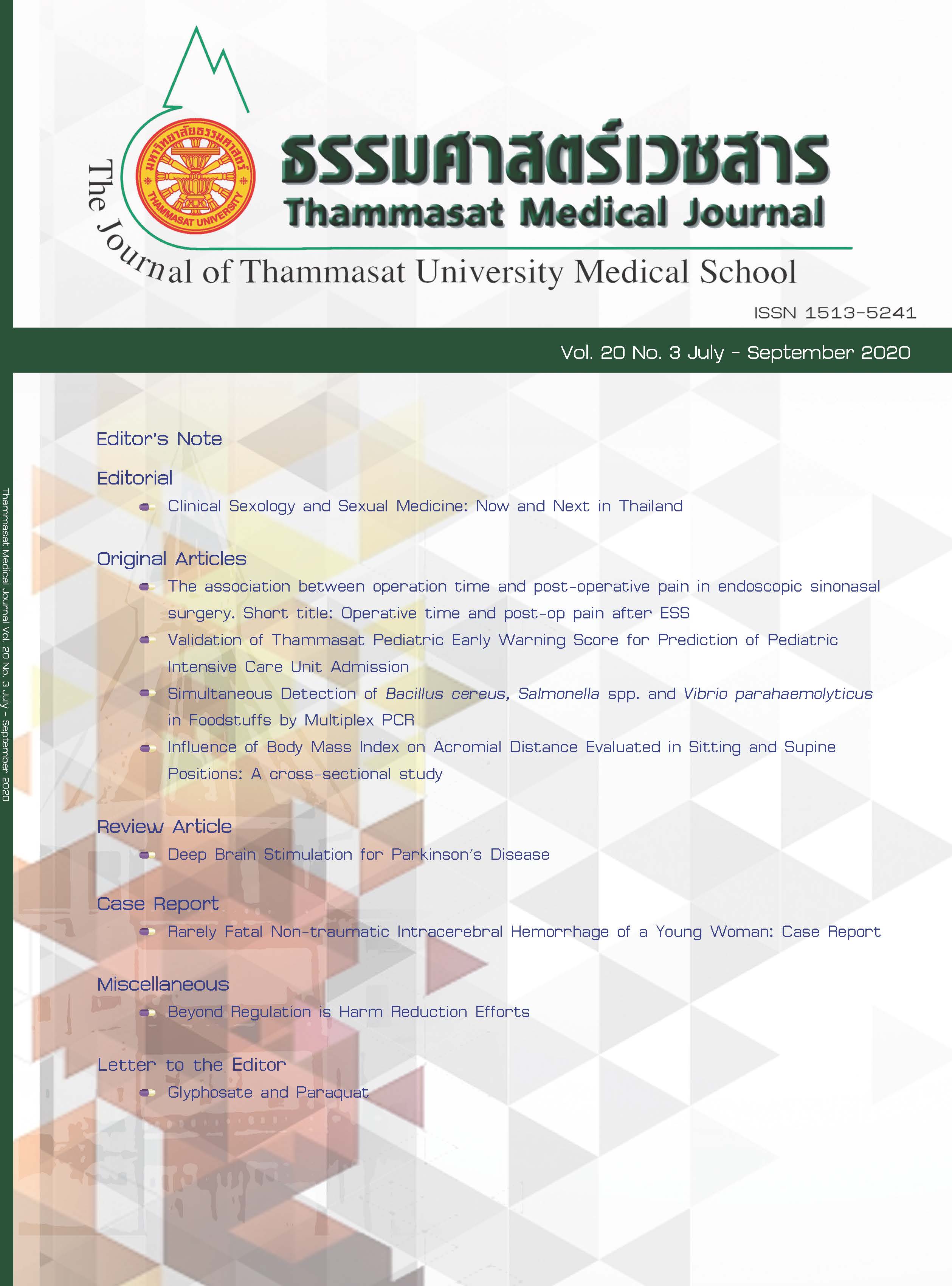Validation of Thammasat Pediatric Early Warning Score for Prediction of Pediatric Intensive Care Unit Admission
Keywords:
Pediatric Early Warning Score, Pediatric intensive care unit, Unanticipated pediatric intensive care unit admissionAbstract
Objectives: The aim is to prospectively validate Thammasat Pediatric Early Warning Scores (TPEWS) in the prediction of unanticipated PICU admission.
Design: Prospective, descriptive, observational study
Methods: All children from 1 month to 15 years old who were admitted to the general pediatric wards were included. Scoring was conducted by nurses every 4 hours. To ensure the good-inter-rater reliability among nurses, the first 20 scorings were performed by two nurses and Cronbach’s alpha analysis was performed. Children who were admitted to PICU for elective procedures were excluded. Validity was analyzed using area under the receiver operating characteristics (ROC) curves, sensitivity, specificity, positive and negative predictive value.
Results: A total of 242 children were included for analysis. The mean age was 3.78 ± 7.80 years and 53.3% were male. Initial phase revealed excellent inter-rater reliability (Cronbach’s alpha = 0.934). Thirteen children (5.4%) were transferred to PICU. The area under ROC curve for predicting PICU admission was 0.965 (95% CI: 0.927-1). Sensitivity and specificity for PICU admission using a cut-off value of > 4 were 92.3% and 89.1%, respectively. Positive predictive value and negative predictive values were 32.4% and 99.5%, respectively.
Conclusion: TPEWS is a novel, simple scoring system that demonstrates high sensitivity and specificity for categorizing clinical deterioration in patients at risk for PICU admission.



